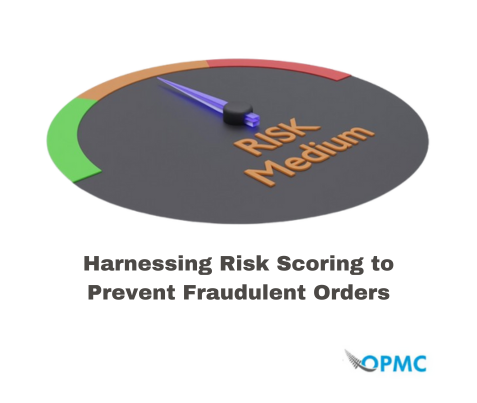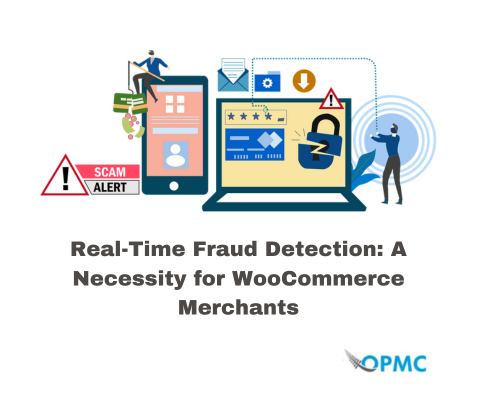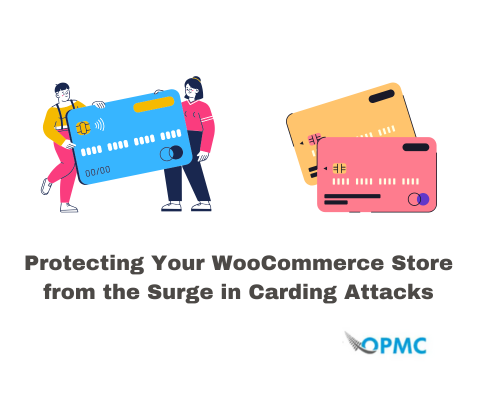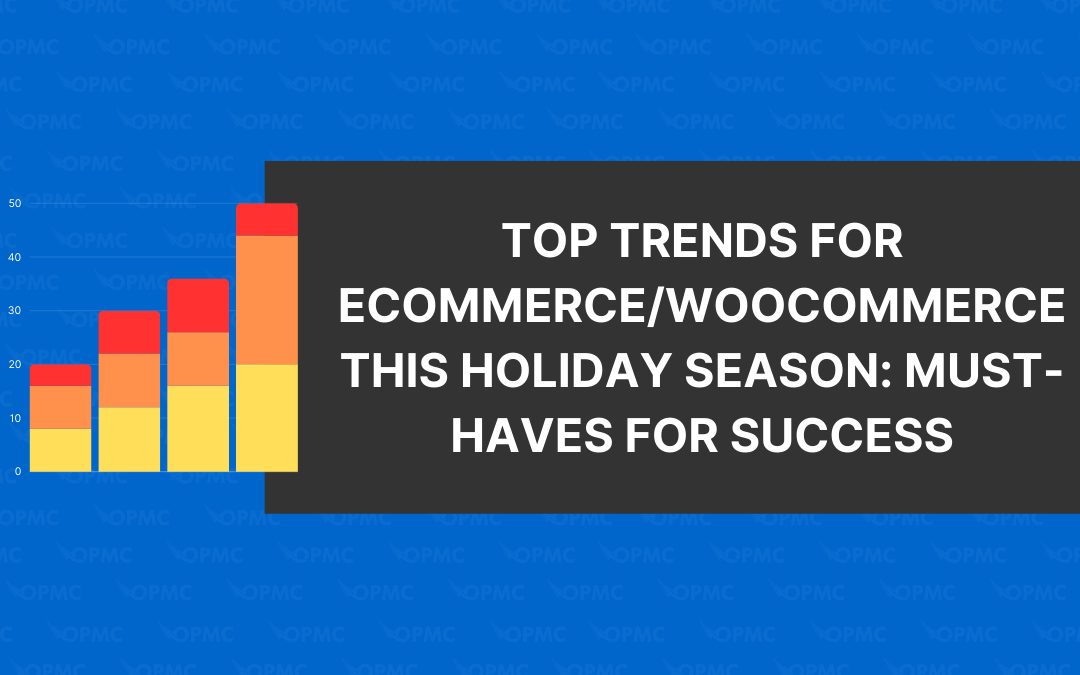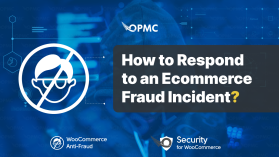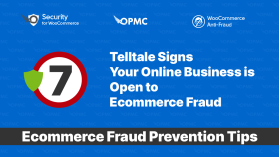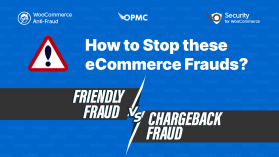The total cost of ecommerce fraud exceeds $48 billion in annual revenue, and that number is only getting larger every single second of every single day. The more successful businesses have growing revenue online, the bigger the painted red and white targets on their backs.
Put another way, online fraudsters, thieves, and hackers are going to go where the money is the most. While that does mean there is a lot of success to be made online because it is such a rich target, it also means you need to implement a many-layered security system to avoid ecommerce fraud.
Don’t worry. Our professional team at OPMC has your back! We’ve compiled a quick list of key ways to use your data analytics from your website, Google, and other resources to fight off potential fraud cases.
Why Does Fraud Prevention Matter in Ecommerce?
First and foremost, you want your online store to prevent credit card fraud and other chargebacks because it damages your potential revenue. Instead of earning millions on those new lamps you’ve spent years developing, you’re stuck with growing fees from payment processors because of fraudulent activity.
The next reason is reputation. If your company has a reputation for dealing with red flags and online fraud, it will likely lower the customer experience and harm your “trust factor.” Finding a way to “clean house” of these issues sets you up with better online authority and dependability.
Finally, there is time. Who in their right mind wants to deal with identity theft or other suspicious activity? These issues get muddy quickly and involve stressed-out customer service agents at your partner affiliates, law enforcement, and sometimes court battles.
You’re far better off nipping this issue in the bud. Here is our list of ways to leverage your data for better fraud prevention.
#1 – Transaction Monitoring
Keep one eye on your transactions and the other on your data. Real-time analytics of purchasing patterns or the rapid success of orders from a dangerous IP/region helps avoid fraud.
Instead of dealing with a potential fraudster from an IP that has harmed your business in the past, you can block them all together and go on your merry ecommerce way.
#2 – Geolocation Analysis
Website visitation data is crucial to unlocking those countries that cause the most fraud. Analytics can point out discrepancies, like if an IP doesn’t match the billing or shipping address being used for the items you wish to send.
That way, you are shipping a ton of your custom cat furniture to some address in Brazil when the credit cards used say China.
#3 – Device Fingerprinting
No, this tactic doesn’t mean biometrics. It means using data to give specific information about a device placing an order. You could learn what type of browser they are using, the operating system in place, language settings, and more.
Not only does this help uncover people trying to hide their activities, but it will give you insight into the systems your best customers prefer.
#4 – Link Analysis
Believe it or not, there is such a thing as “fraud rings” in the ecommerce business world. These are teams of fraudsters working together to uncover susceptible online shops they can steal from in rapid succession.
You can use data analytics to uncover links between different transactions, all stemming from a single source or based on some pattern that multiple orders have in common.
#5 – Behavioural Analytics
This factor for preventing suspicious activity is a little more intrinsic. Instead of looking at endless data, you are using the intuitive nature of your own mind to analyse transactions.
Look at how legitimate transactions are completed and then compare them to others. You’ll see some anomalies in behaviour that will indicate fraud.
If you want more evidence-based support, use analytics to detect unusual navigation patterns or the rapid speed of entering customer data.
#6 – Credit Card Verification
This should always be step one in ecommerce fraud prevention. Internal data analytics can be used to verify credit card information against addresses, patterns, and CCV numbers.
Without this verification, you will likely see a spike in credit card fraud or identity theft. Fraudsters will quickly flag your business as “weak” due to a lack of this layer of security.
#7 – Risk Scoring
Every transaction should be given a score. This could be based on previous interactions, geographic area, verification models, and more.
The idea is to rank the transaction for authenticity. The better the rank, the more likely it is a verifiable customer. Otherwise, you can block anything below a certain level or flag it as suspicious.
Our WooCommerce Anti-Fraud plugin completes this scoring automatically so you can receive real-time notifications in case something squeezes through the system.
#8 – Machine Learning Models
AI (artificial intelligence) and ML (machine learning) modelling are the wave of the future. It allows your active anti-fraud systems to learn from previous transactions. The more you get orders, the better the accuracy at detecting red flags or risks to sensitive data.
All of this is based on reliable and easy-to-categorise data analytics. Without that, there is no barometer or baseline for what is a “good” transaction over a potential fraud.
#9 – Customer Segmentation
You probably already segment your various customers based on demographics, buying patterns, and other factors. This is what you would want to do for marketing and targeted interactions through email campaigns.
The same data can be used for more stringent checks along your purchase and supply chain. You can prevent certain transactions because you see patterns in purchase history, behaviour, or other tailored fraud detection strategies.
Final Thoughts
There is no better way to say it. Ecommerce fraud hurts your business. It ends with lost revenue, fees to payment processors, and a mountain of emails to iron out so you don’t lose good customer service or online reputation points.
Using a comprehensive solution for fraud prevention should be near the top priority of running your online business. Our WooCommerce Anti-Fraud plugin provides a wealth of automated protection through a digital shield around your ecommerce store.
This is a highly WordPress-compatible solution with AI-driven insights into high-risk orders. You gain a massive benefit in the war against online fraudsters through customisable fraud prevention settings.
We’ve also partnered with Maxmind, an industry-leading fraud detection service that uses GeoIP location settings to uncover potential risky transactions in real time. Over 100,000 businesses like yours rely on Maxmind so they don’t lose revenue to shameless fraudsters. Download our plugin and experience the benefits today!
FAQ
How is data analytics used to prevent fraud?
When you combine analytics with automation and human interaction, you develop a comprehensive solution to prevent future or potential fraud. This data gives you parameters for what has been used in the past to dictate what may happen in the future.
How can you reduce the risk of ecommerce fraud?
A comprehensive solution through a multi-layered approach is your best bet. That is why our WooCommerce Anti-Fraud plugin includes Maxmind technology.
Why data analytics is particularly helpful in detecting fraud?
There are many factors, but two that seem to be the most effective are matching credit card information and the geographic location of the buyer.
Visit our store today!
Get a powerful boost to your security, customer support, inventory management, and more…

